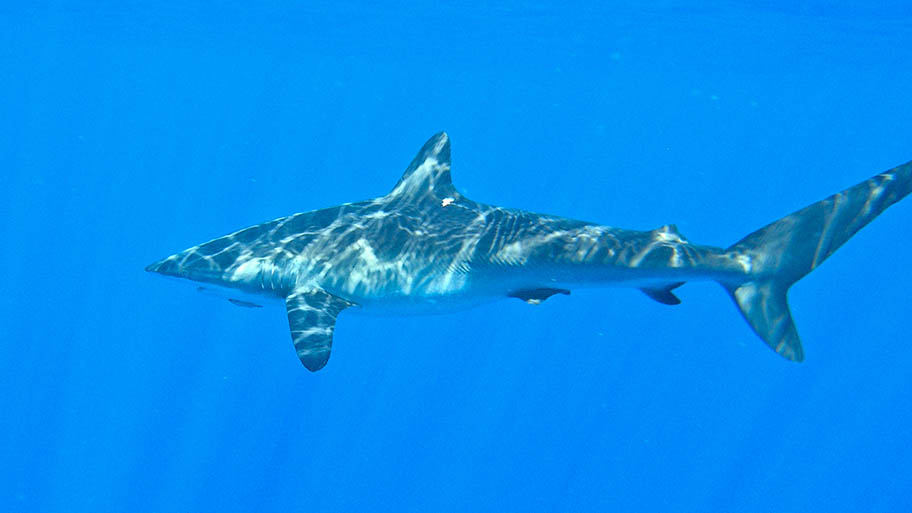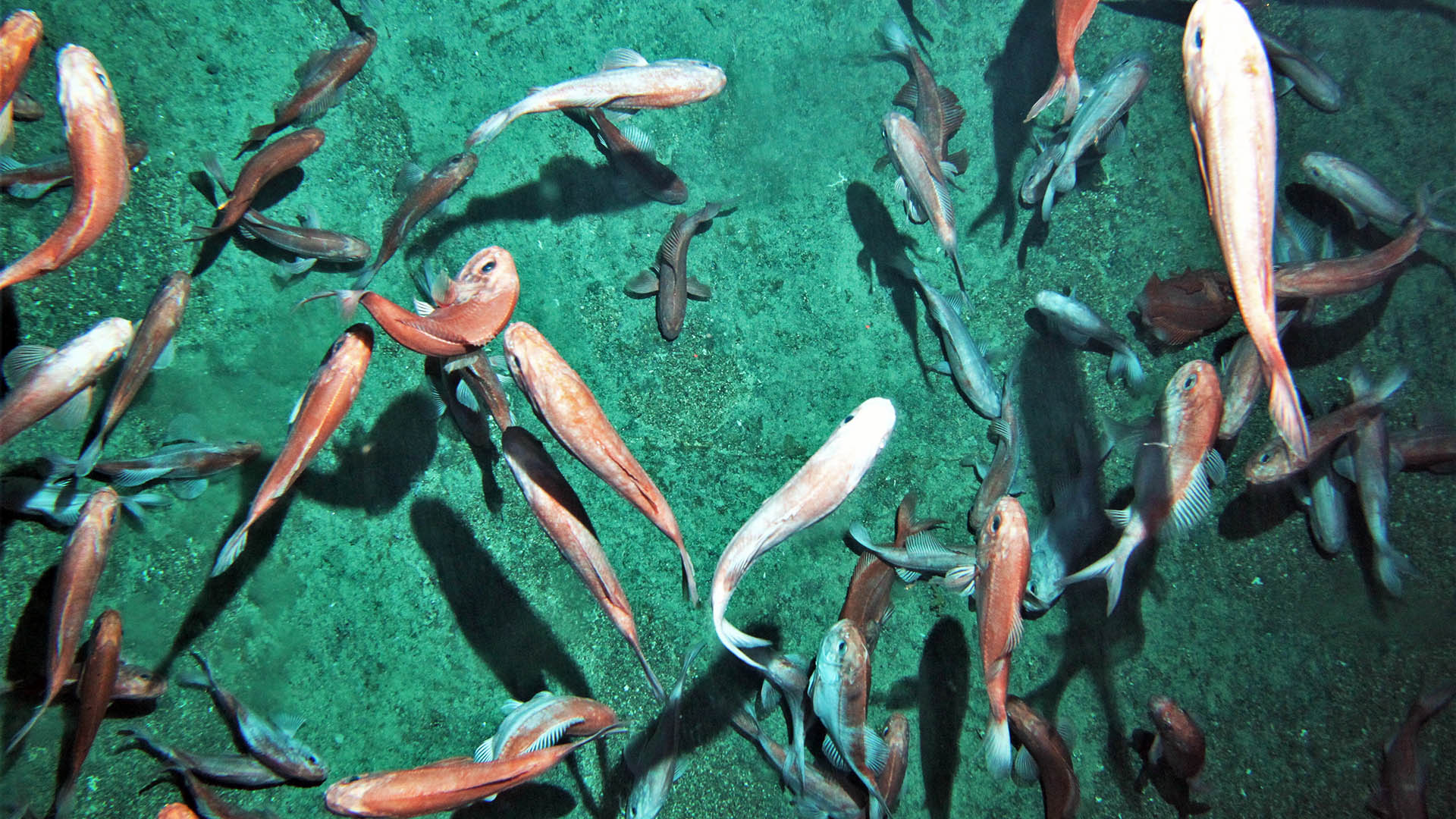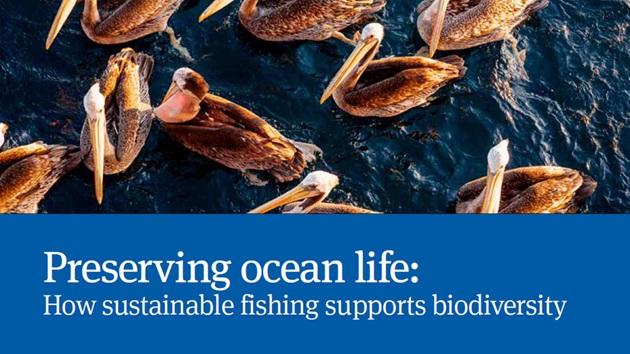1. There are significant regional variations in stocks fished sustainably
In keeping with previous reports, the report indicates stark differences between regions. The Northeast Pacific and Southwest Pacific comfortably surpass the global average with 92.7% and 85% respectively of stocks fished sustainably. While in Antarctica 100% of stocks are fished within biologically sustainable levels – though small in volume, these fisheries demonstrate the potential of ecosystem-based management and international cooperation.
However, in other regions stocks remain under intense pressure. Overfishing is a serious problem in the Southeast Pacific and Eastern Central Atlantic where less than half of stocks are fished sustainably – 46% and 47.4% respectively. The Mediterranean and Black Seas have some of the lowest proportions of sustainably exploited stocks at 35.1%, though early signs of recovery indicate that regional cooperation and national efforts can yield results.
“These regional differences are not about a lack of understanding of fisheries management in 2025. We know what works and what doesn't. It’s really about resourcing and priorities,” says Amanda Stern-Pirlot, MSC’s Chief Standards Officer.
“It takes a lot to organise good fisheries management – the MSC Standard, for example, is not easy to meet. Areas with better fisheries management are more likely to have certified fisheries. In areas where there is a scarcity of money and lots of challenges, the urgent problems are going to need to be dealt with first.”
“This report is a kind of new world in terms of helping us to really understand what’s going on with fisheries’ sustainability. It helps you to react to it more substantively.”
- Amanda Stern-Pirlot, MSC’s Chief Standards Officer
Each region has a different history. The Mediterranean and Black Seas have long established fishing cultures and many countries each with their own interests and economic challenges, says Stern-Pirlot. “As such it’s really hard to create an effective regional management system after so long and when stocks have been overexploited for years. How do you dig yourself out of that? Even though you can see everyone will be better off.”
In contrast, the Northeast Pacific, which scores highly on stocks fished sustainably in the report, belongs to fewer people and entities, so it’s easier to work out the best way to exploit stocks.”
Michael Melnychuk, Principal Scientist (Data Science) at the MSC, adds: “These regional patterns are broadly consistent with conclusions by the FAO and fisheries experts worldwide that effective fisheries management supports the long-term sustainability of fishery resources.”
2. Not all species are equal – Tuna sets the pace
The FAO report calls out tuna fisheries as high-performing in terms of sustainable management. Data shows that 87 percent of tuna and tuna-like stocks are sustainable (i.e., not overfished), or when weighted by their volume of production, 99 percent of total tuna landings came from sustainable sources (i.e., from stocks that are not overfished).
“RFMOs are the key to maintaining healthy tuna stocks as industries and nations generally take a ‘me first’ approach,” says Bill Holden, Senior Tuna Fisheries Outreach Manager at the MSC. “Once the RFMOs reach an agreement, and through monitoring and good data, the stocks tend to recover.”

The report notes that global tuna catch has remained stable at around 5 million tonnes in recent years. More than half of the tuna fished sustainably is skipjack (57%), which makes up the majority of shelf-stable tuna.
Of the 23 assessed tuna stocks only two remain both overfished and subject to ongoing overfishing: Indian Ocean bigeye tuna and Mediterranean albacore tuna. Encouragingly, 95 percent of the total global tuna catch originates from stocks that are not overfished and where overfishing is not occurring. This is largely due to the healthy status of skipjack tuna stocks.
The FAO report concludes that the current scenario suggests a management focus that maintains yields and catches rather than expanding them: “Efforts should continue to focus on strengthening management measures, where required, through adopting management procedures, maintaining stock health, and ensuring the long-term sustainability of tuna populations.”
3. Updated methodology makes for improved assessment methods and collaborations
The FAO has made its most substantial changes in decades to methodology when processing data for the report. This has introduced both smaller and larger species and increased the number of stocks assessed five-fold.
However, it’s worth noting that the total catch represented from assessed stocks has only increased slightly, from 72% of global marine fishery landings in 2021 to 74.2% in the same year. And the resulting classifications of fish stocks into the categories ‘sustainably exploited’ and ‘not sustainably exploited’ (previously, ‘overfished’) are remarkably like those under the earlier approach and yield similar figures.
Other major advances in the methodology used include a three-tiered approach to assess stocks based on the availability of data and quantitative stock assessments. Where available data is sufficient, results of formal stock assessments are considered, and where available data is more limited, models of intermediate complexity or data-limited methods are used instead. The methodology also uses a more transparent and participatory approach which relies more formally on input from national and regional experts in a process that is intended to strengthen capacity and trust.
“These methodological advances, years in the making, are a welcome addition to our knowledge” says Michael Melnychuk. “In addition to the technical developments, the increased collaborative approach with national and regional fisheries experts is expected to strengthen communication flows and local capacity building for continued improvements in evaluating the world’s fishery resources.”
4. Bycatch concerns – Highly migratory sharks remain vulnerable
According to the FAO report, global trends underscore persistent threats to sharks from targeted fishing as well as bycatch. “It’s a big concern,” says Dr Adrian Gutteridge, MSC Senior Fisheries Standards Manager and shark expert.
“Tuna fisheries interact with a number of highly migratory shark species such as silky sharks and oceanic whitetips. The latter has undergone a 98% population reduction across its range. In response, all the tropical tuna RFMOs have listed it as a non-retention species.”

Major tuna RFMOs have also adopted many shark-specific conservation and management measures. These include prohibiting shark finning (removal of fins and discarding of the carcass), mandating data collection and reporting, and mitigating bycatch. Shark finning is also banned in MSC certified fisheries, and recent changes to the MSC Fisheries Standard have strengthened measures to ensure that it is not taking place.
The report further demonstrates ongoing issues facing highly migratory sharks. “Most species across their entire range lack basic management such as catch limits and management targets,” says Gutteridge.
“Any species is capable of recovery with sufficient time and management efforts. However, it will take a concerted effort from the international community to reverse some of the trends for these species. MSC certification is one means that will help drive and incentivise better conservation efforts for these important species.”
A major challenge [highlighted by the FAO report] that faces longline fisheries is to improve information through observer coverage and long-term monitoring. Gutteridge adds: “As that occurs, the information these fisheries gather will flow into better management efforts, placing these fleets ahead of non-certified fleets when it comes to the conservation of sharks.”
5. Kept in the dark – we have limited knowledge around deep sea species
Sitting near the bottom of the sustainability rankings, the report found that only 29% of deep-sea species’ assessed stocks are fished sustainably.
However, discerning a clear picture is problematic. Most species encountered by deep sea fisheries are classified with an unknown status and often have complex life histories and limited data availability.
“A lot of people think there’s no way these fisheries could be sustainable. But acknowledging the unknowns is the only way to be sustainable at these depths,” says Stern-Pirlot. “When there’s a lot you don’t know, you have to be way more conservative in how you exploit stocks.
"For example, in the absence of complete information on orange roughy in Australia and New Zealand they set lower catch limits - well below maximum sustainable yield to allow stocks to recover. That is responsible management in those situations.”

6. Overfishing has stabilised (for now)
With 35.5 percent of stocks classified as overfished, the report suggests that overfishing globally has stabilised. “This is an encouraging development backed up by the more detailed scientific analysis of fish stocks by the FAO,” says Rupert Howes, Chief Executive of the MSC.
It is not, however, a time for complacency. The report highlights the ongoing challenge of overfishing – increasing at a rate of approximately 1% per year in recent times – and the need for improved fisheries management.
"These statistics are encouraging in that we’re heading in the right direction and in some cases have even got there,” says Stern-Pirlot. “That said, there are many challenging situations in the developing world that need the attention that some of the biggest fisheries have already received. These challenges remain particularly complex in smaller scale fisheries in the Global South or in less well-resourced areas where fishing is vital for people’s livelihoods.”
Bill Holden concludes: “Through coordinated science, responsible management, and collective determination, we can turn the tide on overfishing, ensuring that our fish stocks not only recover but thrive – sustaining ecosystems, communities and future generations.”


